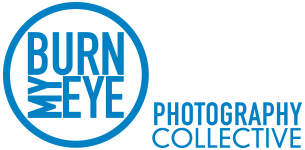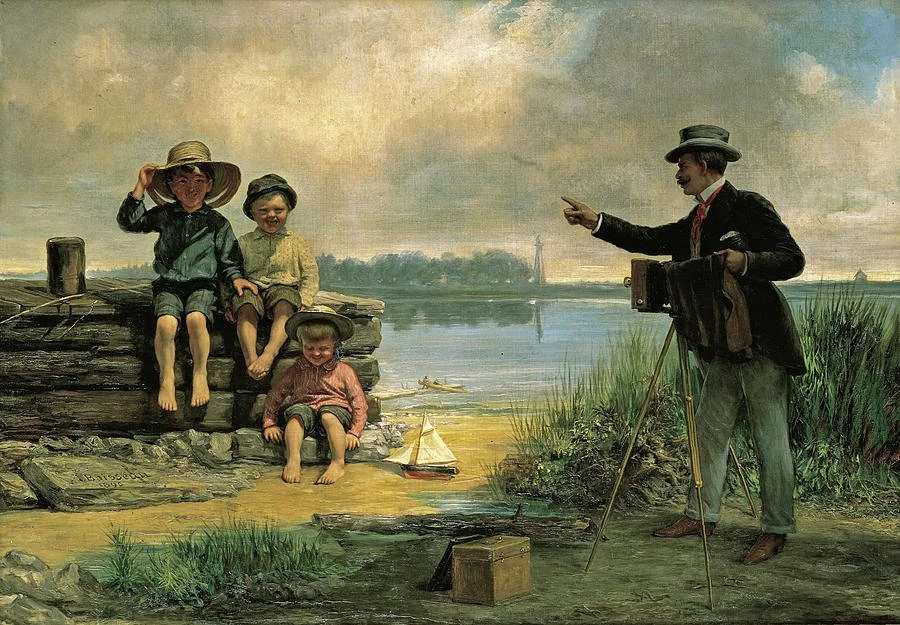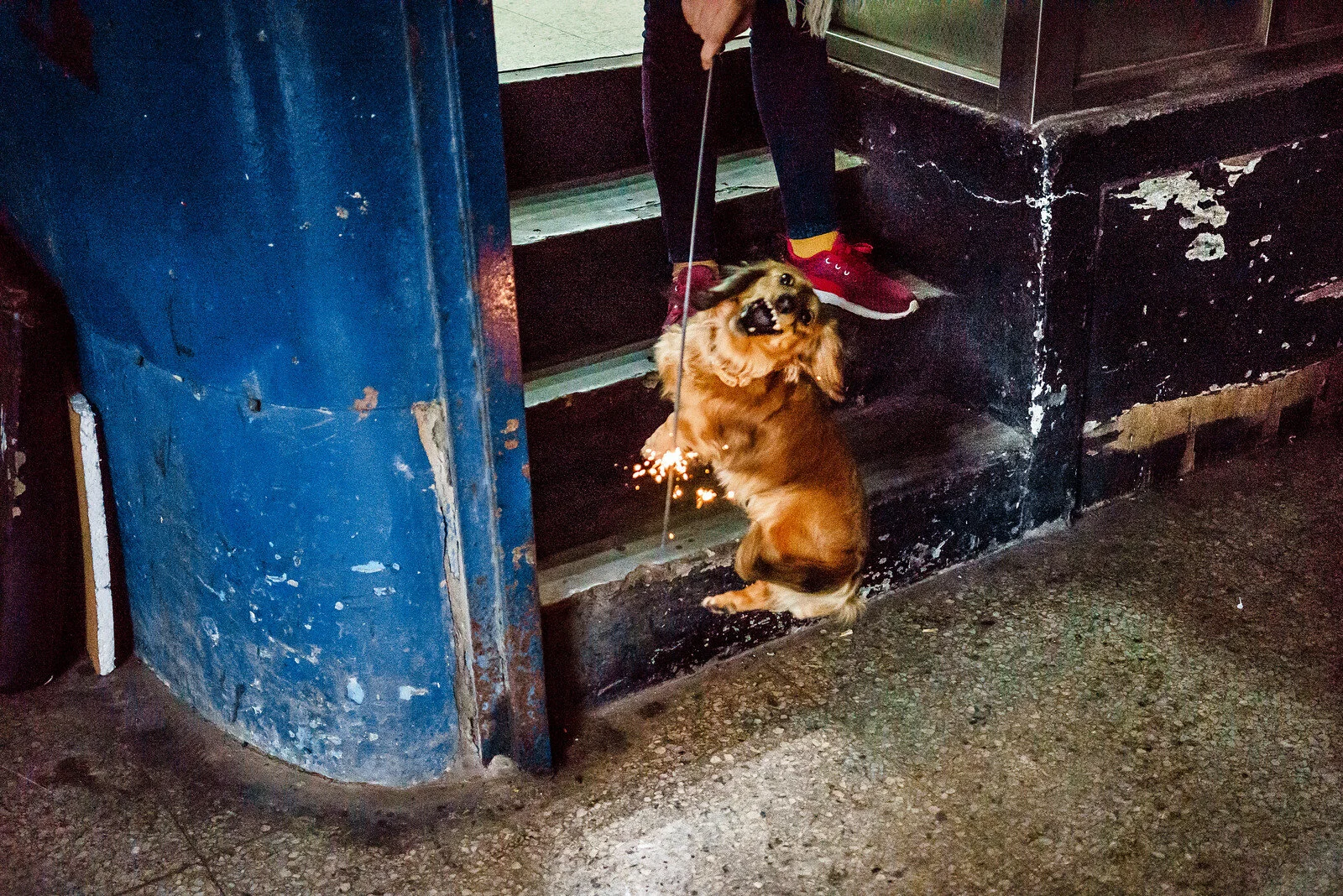- Please tell us a bit about yourself. How did you start in photography, and how did you develop your career?
-After being denied entrance to several art schools due to color blindness, I decided to become a painter or designer, and I bought my first photo... photography for me is built little by little, like a logic that suits me perfectly.
I took my first photos in 1975. The winds of the 1968 revolution were still blowing, but the beliefs and rituals of this world were still well established. We had just taken a cold shower, and we now knew that the old ways of doing things had to change.
I was young, very curious and did not hold back. A wind of freedom blew. I quickly realized that my Nikon was a passport to sneak into this world in transition. The street was the best window, and I took the plunge with my camera in North America and Europe from east to west.
No obligations, no orders…just seeing the world around me. I wanted to immerse myself in this society and convey my feelings, to understand what was frozen and what had changed. I delved into the details of situations, trying to grasp what sometimes escapes us. One must love human nature to devote so much time to it, and it takes time to understand these lives, these ways of transcending the ordinary, these absurd situations, but also this joy of living, this revolt.
Immersing myself in the lives of others allowed me to better convey tenderness, piquancy and intensity, full of humor and love. I was immediate and close, in contact and present with the people I photographed. There was a tacit acceptance, sometimes a look, a word that led to connivance, but the picture was already made. I floated lucidly and quickly into events like the wind.
My gaze is constantly on what surrounds me; I have to live with it. I go from photo to photo as time passes. I’ve never thought in terms of my career as far as my personal photography goes.
- You photographed a lot in swimming pools and by the sea. How did this start? What was so attractive for you about bodies in the water?
- Water has always been my element; I’ve always liked to swim for long stretches, devoting hours when I'm in the sea, the happiness of being calm, this vision at the water's edge, to feel my body in this aquatic movement where I am melting, since I was very young...holidays by the sea, and later in pools. At the time, it was at fun places where we were hanging out with friends; we stayed there for hours, not necessarily swimming; we met lots of people. It was noisy and lively, and with my diving goggles I could find peace under water. I could hold my breath for a long time, and I was able to discover these bodies relaxing in the water.
I started taking photos around the Evreux pool where I lived at the time; I ventured in, holding my Nikon over the water, but I did not feel quite at ease making these photos.
In the summer of 1984, Christophe, a Parisian friend, joined us at the Evreux pool with a small amphibious device, the Baroudeur (HDS) manufactured by Fujica for families on vacation. A wonder, which could go down to five meters of depth, and with quite beautiful optical quality. I borrowed it from him for the entire summer, and then I had four that did not leave me for 30 years.
With the Fujica, I was finally at ease to mingle with the swimmers, both on the surface and underwater. I followed these bodies that floated suspended, others wandering, intermingling in a slow ballet, unveiling their unconfessed sensuality in this watery world. My gaze slid into this aquatic intimacy as free as the water!
- Many shots are from a very intimate distance. Did you ever have trouble by getting so close to half-naked people back then? How would people generally react?
-Whether it is in the street or in a swimming pool, I go for the essentials; it is the people who interest me, and my photography takes place in a zone between 1.5 and two meters. It is a zone of tension; people either perceive me or do not pay attention to me, everything happens very quickly. What guides me are the acts and expressions that reveal a situation, entering the perimeter of the life of these people.
I remain as neutral as possible. I do not release any complicated, negative waves. I feel the frame of my picture and trigger it instinctively. It's a game of thousandths of a second, where the consciousness has to be preceded. We are in the presentiment and experience of this fleeting photo. I never have problems with people; sometimes I’ve had to speak with them for a bit, but it is rare. It all depends on your behavior. You have to be master of all these situations; do not hesitate.
For the photos in the Molitor pool where half of the women had bare breasts: These photos were made in the 1980s, when people were freer. No one asked me about my presence, even the lifeguard...but times have changed; we cannot even make photos at municipal pools any more!
- What was your approach for this project? Were you there to enjoy yourself like your subjects, or would you go exclusively to take pictures?
-These places of water are a pleasure for me; I love to swim, and I cannot help but see these images, so I go for both.
- Your water work often mixes daring and graphic compositions with a certain joie-de-vivre. Were you influenced by other photographers when you first started? If so, who were your heroes?
-I have always valued the richness of an image, of the dialogue that it can have with the person who looks at it, of the graphic sense to allow the viewer to better read it. The first shots are in close proximity for the most part, and the others tell other stories in one image.
My vision has been informed by the freedom and involvement of photographers like Robert Frank, Danny Lyon, Bruce Davidson, Roy DeCarava, and Garry Winogrand.
-You started as a photojournalist. How would you reconcile your professional and personal work back then? Would you shoot in different ways for each?
-The photojournalism came with my work in the press, but I first realized images just for me and my feelings of the times I experienced. The main thing for me is to have taken these photos, to have had my eyes open to the world. I have pursued several projects for more than 30 years that are only now beginning to be shown.
The orders of the press are a straitjacket, a state of mind adapted to fill magazine pages; they disturb my eye, and I had the feeling that I had to wash myself and empty my head in order to resume the course of my photography. It takes total freedom to get closer to oneself and to make one's own photographic work.
- You also have a book about Rockabilly in France in the 80s. How did you come up with that? What was your relationship with those guys?
-My status as a photographer at the local weekly in Evreux, La Dépêche, as well as my interest in them, contributed to make me accept the offer. They probably investigated me...I followed them with a journalist-friend, Yves, but to make the photos I had to spend more time alone with them. This time allowed us to know each other better, and I think that after a while I became part of their decor with my Nikon F. I could forget myself, become almost transparent while being very focused on my images, but I know how to speak when it is necessary and then disappear again quickly. The link was woven quietly...I could go home, photograph their rooms and sometimes have lunch with their parents. After several weeks, they used to warn me when they were going to do something. The sessions at the hairdresser were important, the salon held by Mr. Tuffier, who with glasses at 70, a goatee and decked out with a large floral tie, was the great magician, an artist!
I am like a sociologist; I made connections, I spent a lot of time with them, and I was interested in them, but I kept my distance. I saw some of the guys from that time at the release of the book in 2016, and it is almost like their bible. I enjoyed sharing this story with them!
-I read that only in the past five years you've been looking back at your personal work, is that right? Is there a reason for that? What are you discovering about yourself by revisiting your archives?
-After I stopped working for the press in 2007, it took me a few years to find myself, get back on my feet and regain my calm.
It was in 2013 that I began to view my archives, which I had almost forgotten, but which also represent my deep investment in photography and the eye I have focused with for several decades. These photos have never been shown, but for me, the main thing is to have made them. The first series that I presented was the set made at the Molitor pool in 1985.
These photos have proved unique in the history of the pool as well as from a rare point of view in close proximity to the people photographed. They reveal a time that surprises with its ambient freedom and a kind of Dolce Vita of the 1980s.
The photos were published by M of Monde, IVogue USA, presented by the Agnès b Gallery of the Day at Paris Photo, as well as the Artcurial gallery in Paris, and published by The (M) editions in the form of a Book of Art. Polka magazine just made a portfolio this summer (2018) with these images, and the Gallery Hegoa is currently holding an exhibition.
I see that my work contains a great intimacy; this has always been how I take photos, but I was not always aware of it. When I’m showing photos or speaking around my exhibitions, many people ask, "How did you get so close?"
- Are you now dedicating yourself entirely to your past work, or are you working on something new these days?
- I spend a lot of time managing my archives, but it's a pleasure to update these images, so I proceed by series!
Having put forward these images and the spirit in which I realized them sharpens my current glance and my desire for an even closer vision, to be in on the human details of the street; Mark Cohen is one of the better examples of this almost tactile approach.
Since 2014, I have realized some Polaroid work at the Molitor pool...the rules have changed, and I have to come with people I’ve asked, but the series will continue. Polaroid Originals decided to help me with this project; it's very stimulating!
I have been doing research since 2015 on the body and water in color; it is a pictorial series on the edge of abstraction (my only work in digital). This visual research is part of the long-term work I’ve been pursuing since 1984 in b&w.
I started working on Look Rock in b&w with a medium format camera, and I started shooting England again in 2017 with Kodak TriX after shooting there in the 70's and 90's.
I always work with a very strong dynamic, like a young photographer of 25...but with murky intentions.
You can see more work of Gil Rigoulet on his website and on Instagram





